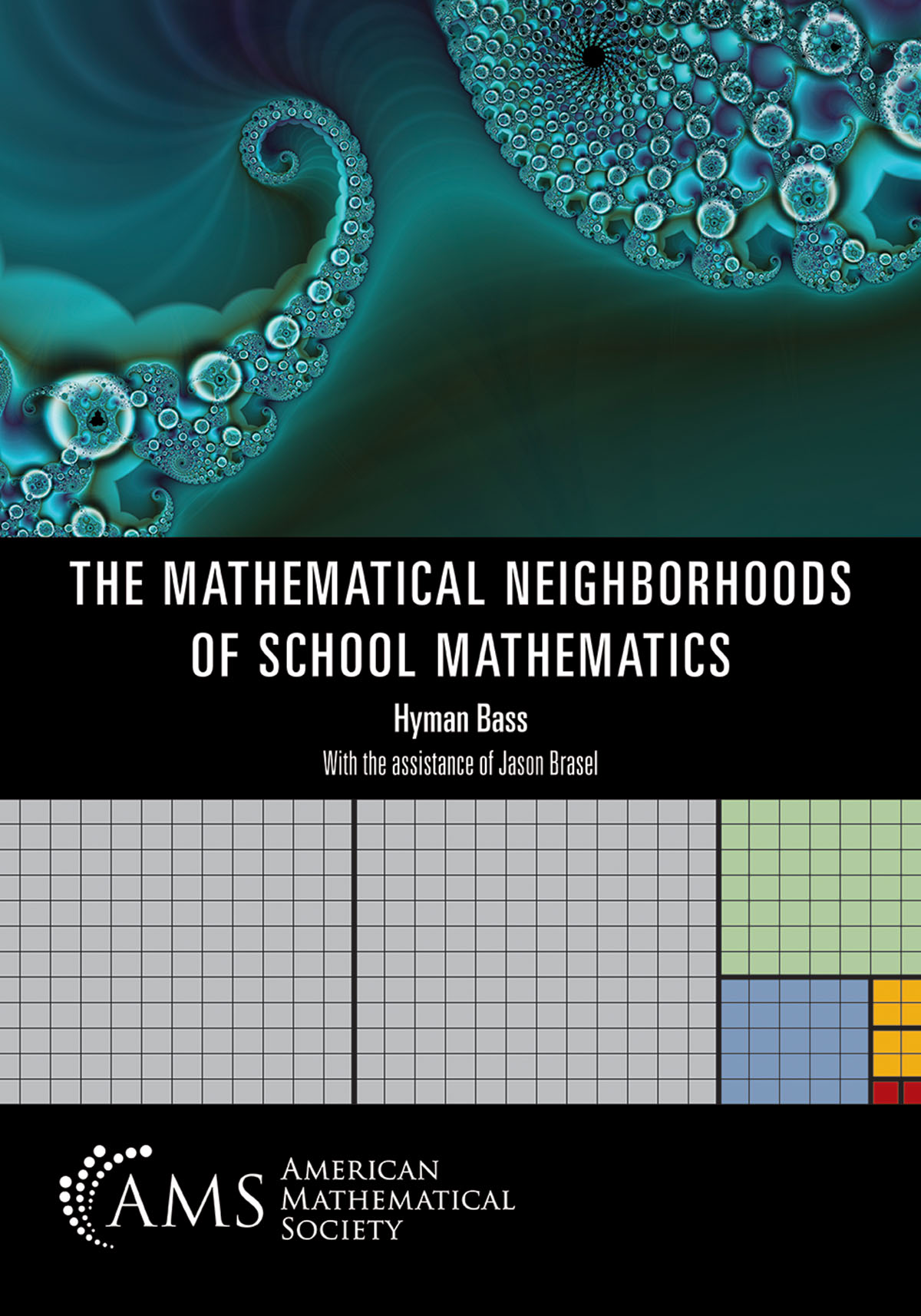
- Author: Hyman Bass with the assistance of Jason Brasel
- Publisher: American Mathematical Society
- Publication Date: 07/27/2023
- Number of Pages: 339
- Format: Paperback
- Price: $89.00
- ISBN: 978-1-4704-7247-4
- Category: textbook
[Reviewed by Annie Selden, on 11/12/2024]
This is a book about mathematics, not mathematics education. While the author sees the potential audience for this book as secondary mathematics teachers, mathematics teacher educators, mathematics education researchers, undergraduate mathematics majors, and undergraduate mathematics faculty, it is not quite clear how it would be used. Locally, it seems written like a traditional mathematics textbook in the definition-theorem-proof style, but it’s not like a traditional mathematics textbook intended for a single course, as a rich variety of mathematical domains, not normally contained in the same volume, are considered. The volume is definitely not about the teaching and learning of mathematics, except perhaps for the final chapter that discusses instructional design for problem-solving activities. For anyone considering its use, it would be advisable first to read the Introduction to understand Professor Bass’ point of view.
According to the author, the book shows the organizing power of the notion of group to bring coherence to a lot of fundamental topics, such as the ubiquitous appearance of binomial coefficients in polynomial algebra, probability, discrete mathematics and calculus; the numerous applications of the Inclusion-Exclusion Principals, and the range of implications of the ABC Conjecture. In addition, he concentrates on sameness, such as the isomorphism of algebraic structures and the congruence of geometric objects.
The book features the real line, $\mathbb{R}$, prominently, and rather than focusing on, and isolating, the integers, $\mathbb{Z}$, from the continuous, it emphasizes the inclusion of $\mathbb{Z}$ in the real line, $\mathbb{R}$. This is in line with an idea of the Russian educational psychologist Davidov (1936-1998) and similar to how numbers are introduced to primary pupils in Russia. In accord with this view, division with remainder, $a = qb + r$, is defined for all real numbers $a, b ≠ 0$ with $q$ an integer and $0 ≤ r ˂ |b|$.
$$Chapter 0, which is intended for reference, covers some basic set theory, elementary logic, and definitions of function. Each subsequent chapter is largely self-contained and opens with a helpful guide to the reader, including the background needed to read it and an overview of its main content, as well as information on optional sections, and ends with an exercise section. Chapter 1 is foundational and deals with measurement. Chapters 2 through 10 contain the mathematical heart of the volume. Chapter 11, the final chapter, is written for mathematics educators and requires no special technical background. It has no dedicated exercises at the end as the chapter itself is all about problem solving and making connections.
This volume often has the feel of a graduate mathematics textbook with numbered theorems and proofs, somewhat reminiscent of the Bourbaki volumes of the ‘50s and ‘60s, but there are sections of helpful exposition in between.
Annie Selden is now retired. She is Professor Emerita of Mathematics from Tennessee Technological University, and was until recently, Adjunct Professor of Mathematics at New Mexico State University. In 2002, she was recipient of the Association for Women in Mathematics 12th Annual Louise Hay Award for Contributions to Mathematics Education. In 2003, she was elected a Fellow of the American Association for the Advancement of Science. She continues to review/referee manuscripts for mathematics education research journals and also occasionally writes Media Highlights abstracts on mathematics education research for MAA’s College Mathematics Journal.
